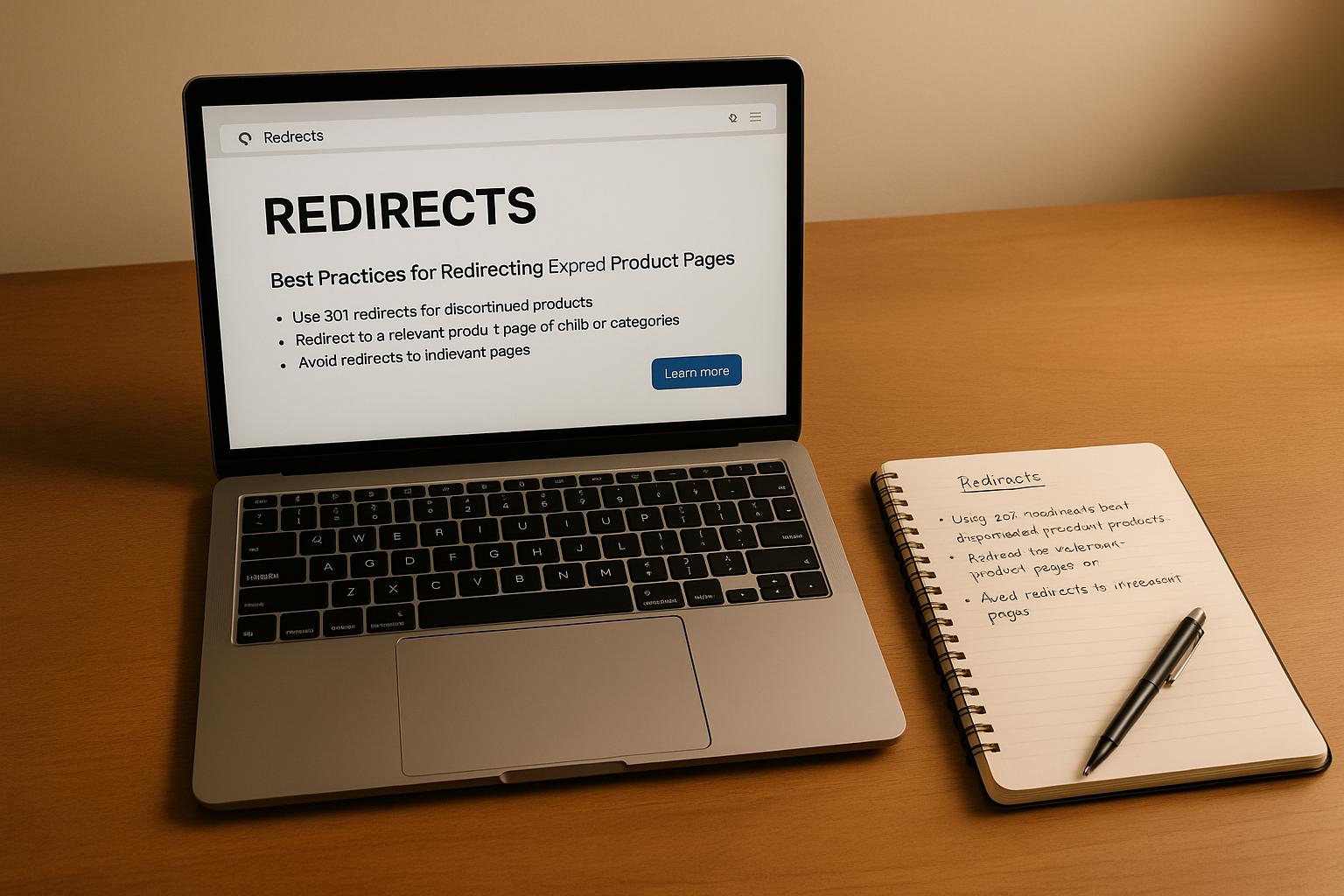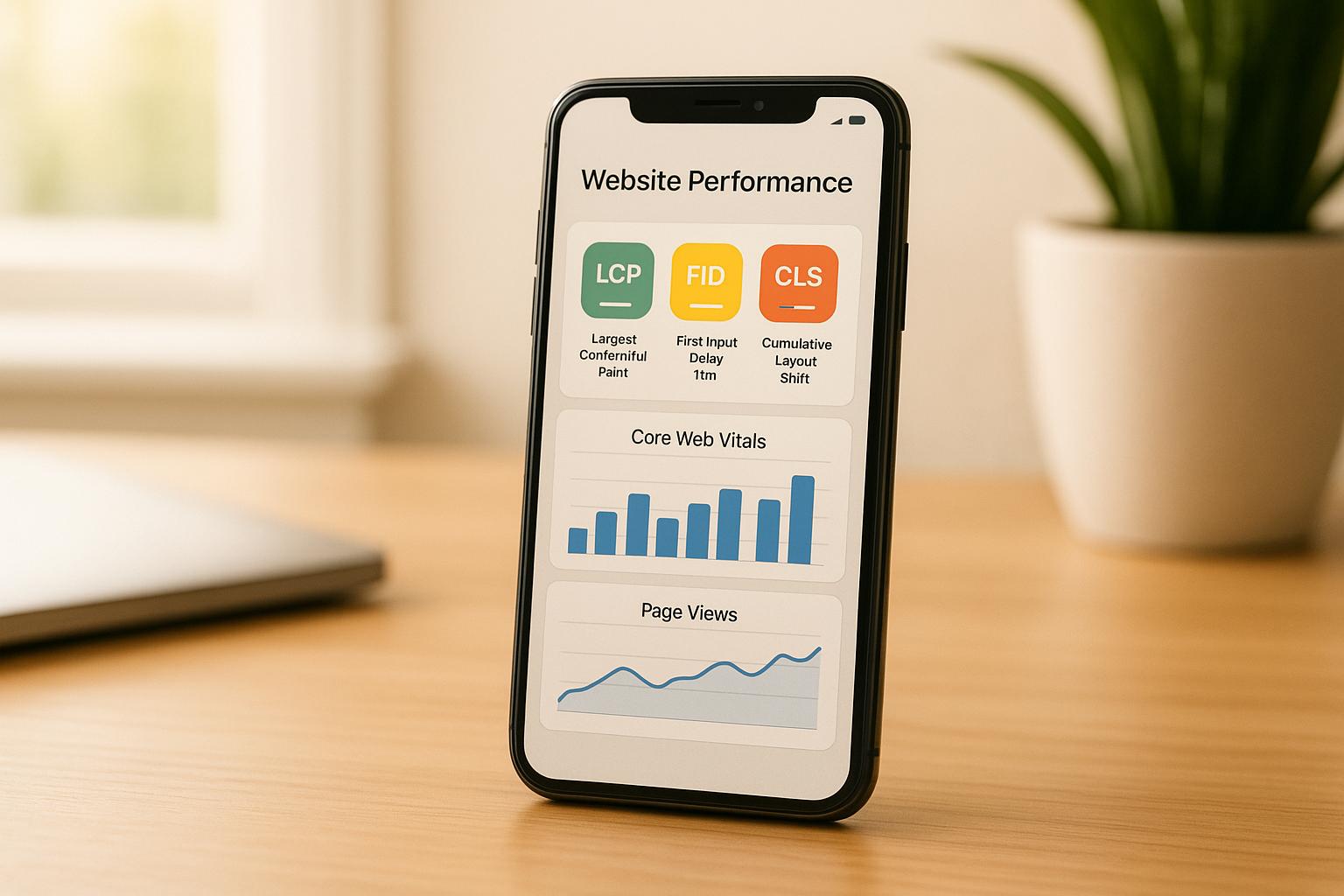A competitor SEO audit helps you find gaps, target high-value keywords, and enhance your content strategy. Here's how you can get started:
- Identify Competitors: Focus on websites ranking for your target keywords, even if they’re not direct business rivals.
- Analyze Keywords: Study competitors’ keyword performance, search intent, and untapped opportunities like long-tail keywords.
- Review Content: Check content quality, structure, and engagement to find areas where you can do better.
- Evaluate Backlinks: Look at competitor backlink profiles to discover link-building opportunities.
- Set Clear Goals: Define specific objectives like keyword gap analysis or content optimization to guide your audit.
Quick Overview
| Step | Key Focus | Tools to Use |
|---|---|---|
| Identify Competitors | Search rankings, keyword overlap | Google Search Console, SEO tools |
| Analyze Keywords | Search intent, volume, difficulty | Keyword research tools |
| Review Content | Quality, structure, media usage | Content analysis tools |
| Evaluate Backlinks | Domain authority, link relevance | Backlink analysis tools |
Use these insights to refine your SEO strategy, prioritize impactful tasks, and track your progress for long-term success.
How to Conduct SEO Competitor Analysis: Template for ...
Step 1: Find Your Main SEO Competitors
To improve your SEO strategy, it's important to identify competitors that rank for your target keywords and compete for search visibility. These may not always be your direct business rivals. Use structured methods to pinpoint these competitors effectively.
How to Identify Competitors
Look for websites that consistently rank for the keywords you're targeting. Here are some practical ways to identify your main SEO competitors:
- Search Analysis: Search for your primary keywords and review the top-ranking websites. Pay attention to those that frequently appear across different searches - they're likely your core SEO competitors.
- Keyword Overlap: Find sites that target similar keyword groups. A large overlap in keyword focus signals a direct SEO competitor.
- Market Segment Focus: Narrow your analysis to competitors within your niche or location. For instance, if you're a Chicago-based business, prioritize competitors in your local area instead of national brands.
| Competitor Type | Description | Priority Level |
|---|---|---|
| Direct Competitors | Offer the same products/services to the same audience in your location | High |
| Indirect Competitors | Target similar keywords but with different offerings | Medium |
| Content Competitors | Compete for informational queries and keywords | Medium |
| Local Competitors | Operate within the same geographic area | High |
Tools for Competitor Research
SEO tools can simplify the process of identifying and analyzing your competitors. Here are some of the top options:
- Google Search Console: This free tool provides insights into your keyword rankings and highlights areas where competitors outperform you.
-
Advanced SEO Platforms: These tools offer features like:
- Tracking competitor keyword rankings
- Analyzing backlink profiles
- Monitoring content performance
- Comparing domain authority
- Spotting new competitors in your market
Focus on competitors whose SEO performance is achievable for you. Instead of targeting industry giants right away, start by analyzing websites with similar domain authority and resources.
Step 2: Study Competitor Keywords
After identifying your competitors, take a closer look at their keyword strategies to refine your SEO efforts.
Analyze Competitor Keyword Performance
Focus on how your competitors' keywords perform by evaluating:
- Search Intent: Are the keywords aligned with what users are searching for?
- Ranking Positions: Which keywords are driving their organic traffic?
- Search Volume: Observe seasonal trends and any emerging patterns.
Here’s a breakdown of key metrics to monitor:
| Metric | What to Look For | Why It Matters |
|---|---|---|
| Keyword Difficulty | A score between 0-100 | Helps you focus on keywords you can realistically rank for. |
| Search Volume | Monthly search frequency | Shows the potential traffic a keyword can bring. |
| Position Changes | Fluctuations in rankings | Indicates shifts in the competitive landscape. |
| SERP Features | Featured snippets, local packs | Points to additional ranking opportunities. |
Beyond these metrics, look for gaps in your competitors' keyword strategies to uncover areas they may have overlooked.
Discover Untapped Keyword Opportunities
Find keywords your competitors might not be targeting by focusing on:
- Long-tail Keywords: These have lower competition and often lead to higher conversion rates.
- Question-based Queries: Cater to informational searches by addressing common questions.
- Geographic Modifiers: Target location-specific searches for niche opportunities.
Use Keyword Research Tools
Leverage tools from resources like the Top SEO Marketing Directory to streamline your analysis. These tools can help you:
- Track keyword rankings in real time.
- Pinpoint gaps in competitor keyword strategies.
- Access search volume data and keyword difficulty scores.
- Monitor SERP features like featured snippets or local packs.
By combining insights from multiple tools, you’ll gain a well-rounded view of your competition. These tools make it easier to:
- Spot shifts in competitor rankings.
- Identify new keywords to target.
- Understand search intent trends.
- Explore opportunities for featured snippets.
- Evaluate keyword difficulty and potential ROI.
sbb-itb-5be333f
Step 3: Review Competitor Content
Evaluate Content Quality
When analyzing competitor content, focus on these key factors:
- Depth of Coverage: Does the content explore the topic thoroughly?
- Freshness: How recently was the content updated?
- Readability: Is the content easy for the target audience to understand?
- Media Usage: Does it effectively use images, videos, or infographics?
SEO tools can help you measure various metrics to assess content quality:
| Quality Metric | What to Analyze | Impact on SEO |
|---|---|---|
| Word Count | Compare content length to top-ranking pages | Shows how detailed the content is |
| Reading Level | Grade-level scoring | Influences user engagement |
| Content Structure | Use of headers and paragraphs | Affects crawlability |
| Media Richness | Ratio of images to text | Improves user experience |
Additionally, assess how the content is structured to serve both users and search engines effectively.
Analyze Content Organization
Competitor content organization plays a big role in user experience and SEO. Here's what to look for:
1. Header Hierarchy
Examine how competitors structure their headers:
- The main topic should be clearly defined with an H1.
- Subtopics should flow logically using H2 and H3.
- Supporting details can be broken down further with H4 to H6.
2. Internal Linking
Review their internal linking strategy to understand how they connect related topics, distribute authority, and guide users through their site.
Identify Content Opportunities
Use your insights on quality and structure to uncover areas where you can do better. Tools and analysis can help you:
- Spot Underserved Topics: Find areas competitors haven't covered in depth.
- Fill Format Gaps: Add missing content types like videos, infographics, or case studies.
- Track Performance: Identify which competitor pieces get the most engagement and why.
Technical tools like Screaming Frog SEO Spider can assist in analyzing competitor content organization. Focus on these elements to uncover opportunities:
| Content Element | What to Look For | Opportunity |
|---|---|---|
| Meta Descriptions | Missing or duplicate descriptions | Optimize for higher CTR |
| Title Tags | Keyword usage and appropriate length | Strengthen relevance signals |
| Content Gaps | Missing subtopics | Develop more complete content |
| URL Structure | Logical organization | Improve site navigation |
Step 4: Analyze Competitor Backlinks
Dive into your competitors' backlinks to identify potential link-building opportunities. Here's how to approach this analysis effectively.
Assess Backlink Quality
When evaluating competitor backlinks, focus on these key factors:
| Quality Factor | What to Analyze | Why It Matters |
|---|---|---|
| Domain Authority | Look for sites with DA 40+ | Links from high-authority sites pass more value |
| Link Relevance | Check for industry connection | Relevant links improve rankings |
| Link Placement | Content vs. footer links | In-content links hold more weight |
| Link Velocity | Monthly link growth | Steady growth signals a sustainable strategy |
Identify Link Sources
Rank potential link sources using these metrics:
1. Authority Score
Identify strong link sources by evaluating metrics like Domain Authority and organic traffic. Look for sites that:
- Publish content regularly
- Maintain an active social media presence
- Update content frequently
- Follow strong editorial guidelines
2. Relevance
Focus on websites that match your industry and target audience. This ensures:
- Higher-quality referral traffic
- Better topical relevance for SEO
- Increased chances of conversions
Some common link sources include:
- Industry blogs and publications
- Resource pages and curated lists
- Guest posting opportunities
- Authoritative directories like Top SEO Marketing Directory
Use Backlink Analysis Tools
Leverage SEO tools to simplify competitor backlink analysis. Look for tools with features like:
| Feature | Purpose | Business Impact |
|---|---|---|
| Link Discovery | Find new backlink opportunities | Expands your outreach efforts |
| Quality Metrics | Assess link value | Helps prioritize high-impact targets |
| Link Monitoring | Track competitor link growth | Reveals effective strategies |
| Export Options | Create outreach lists | Streamlines your link-building workflow |
Choose tools that provide detailed link data and frequent updates. These insights will help you keep tabs on your competitors and pinpoint the best link-building opportunities. Combine your backlink analysis with findings from your keyword research, content strategy, and technical SEO audit for a complete competitive analysis.
Conclusion: Next Steps After Your Audit
Now that you've identified gaps in keywords, content, and backlinks, it's time to turn those insights into action. These findings are your roadmap to improving search performance.
Prioritize Your Efforts
Focus on areas based on their potential impact and the time required to implement changes:
| Priority Level | Focus Area | Implementation Time | Expected Impact |
|---|---|---|---|
| High | Missing high-value keywords | 1–2 weeks | Faster visibility |
| Medium | Content optimization | 2–4 weeks | Sustained traffic growth |
| Low | Technical SEO fixes | 4–8 weeks | Long-term performance |
This prioritization ensures you're tackling the most impactful tasks first.
Use the Right Tools
Tackling these gaps requires the right tools for the job:
- Keyword Optimization: Use keyword research tools to uncover and target missing opportunities.
- Content Improvements: Leverage AI tools for optimizing existing pages or creating new content that aligns with user intent. These tools can help with structure, readability, internal linking, and even featured snippets.
- Backlink Strategy: Employ link analysis tools to monitor competitor backlinks, find high-authority opportunities, and evaluate link quality.
Monitor and Adjust
Once you've implemented changes, keep an eye on your progress. Reassess your audit findings monthly to track improvements and spot new opportunities. Regular monitoring ensures you stay ahead of the competition.
For additional support, check out the Top SEO Marketing Directory. It offers a range of resources, including tools and expert services for keyword research, backlink analysis, content optimization, technical SEO, and more.


